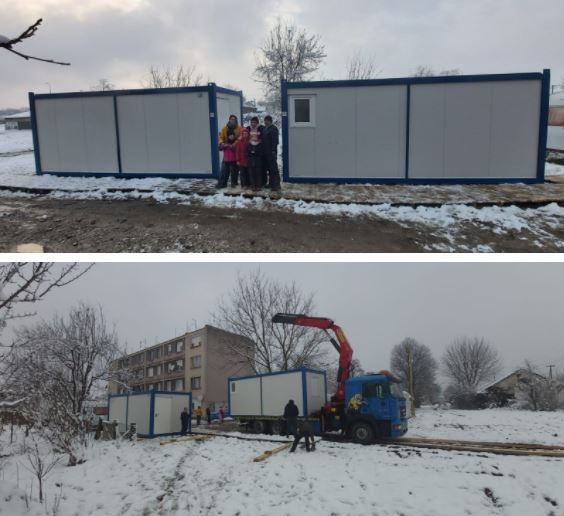Luka Modric is Named the Third-Best Playmaker of Decade, According to IFFHS
January 13, 2021 - Another great recognition for the Croatian footballer: Luka Modric is named the third-best playmaker of the decade.
The International Institute of Football History and Statistics (IFFHHS) named the captain of the Croatia national football team Luka Modric the third-best playmaker from 2011 to 2020, while the title of the best went to Argentine footballer Lionel Messi.
Lionel Messi, who was named the best in the IFFHS selection in 2015, 2016, 2017, and 2019, and was second in 2011, 2014, 2018, and 2020, was named the best playmaker in the last decade.
The second in the IFFHS selection is his former Barcelona teammate Andres Iniesta, who was twice named the best in the annual selection - in 2012 and 2013. Modric is followed by Belgian footballer Kevin De Bruyne (winner of the 2020 annual selection) and Toni Kroos (in the 2014 annual election).
Luka Modric won the award for the best playmaker in the IFFHS annual selection in 2018. For every year in the past ten years, IFFHHS has given the best playmaker 20 points, the second 19, the third 18, and the twentieth on that list one point. Thus, when all the years are added up, Messi collected 174 points, Andres Iniesta 127 points, and Modric 113.
This is another great recognition for the Croatian footballer, whose age-defying play for Real Madrid could fool anyone that he is 35.
Just the other day, Mundo Deportivo declared Modric one of the best and explained that only Modric did something in the attack out of all Real players.
"Modric was the one who had the best ideas in the attack. He set the rhythm of the game, but none of his teammates could follow that rhythm," the Spanish daily sports newspaper wrote.
Modric will lead Croatia as the captain this year through the World Cup qualifiers, which begin in March against Slovenia, Malta, and Cyprus.
Croatia will then gather in June for the European Championships, and will kick-off against England in London.
To read more about sport in Croatia, follow TCN’s dedicated page.
Croatia Records the Largest Decline of New COVID-19 Cases in EU
January 13, 2021 - Good news: Croatia records the largest decline of new COVID-19 cases in the EU.
Index.hr reports that after introducing strict epidemiological measures, Croatia records the largest decline in the number of new infections in the European Union.
As the Our World in Data page chart shows, with about 900 new infections per million inhabitants on December 13, when it was one of the worst in the EU, by January 11, Croatia had reached about 240 cases.
It is essential that the number of hospitalized and dead is dropping, too. Of the 20 deaths from COVID-19 per million inhabitants per day on December 21, that number dropped by January 11 to about 10.
A similar decline is recorded in neighboring Serbia, but the number of newly infected people is currently not as favorable as in Croatia. It records about 320 new infections per million inhabitants. On the other hand, with 5 deaths per million inhabitants, Serbia is better than Croatia according to that statistic. Therefore, it is not clear whether the smaller number of newly infected in Croatia is partly due to a smaller scope of testing.
The steep decline in Croatia followed the closure of cafes, restaurants, and gyms and the restriction of gatherings on November 28, 2020. It was probably also helped by moving to online classes, which was introduced on December 14, and in many schools even before that.
This is in line with research published in the world-renowned journals Scientific Reports Nature and Science.
Namely, a study published in the journal Science on December 15, conducted in 34 European and seven non-European countries, showed that closing schools and universities, limiting gatherings to 10 people or less, and closing most non-essential businesses where close contacts are made, especially nightclubs, bars, and restaurants, have the greatest impact on combating the epidemic.
Similarly, a study published in the journal Scientific Reports Nature was conducted on a sample of 79 territories, which included countries and different states in the United States. According to the study, which analyzed the effects of a wider range of measures, the most effective were curfew, lockdown, closure or restriction of places where people gather (shops, restaurants, etc.), closure of educational institutions (both schools and universities) and the introduction of border restrictions.
This decline is a reason for optimism, but it should be noted that some countries have fared much better than Croatia. For example, Iceland went through a mild two waves that it brought under control relatively quickly while Finland barely felt a pandemic, both in the first and second waves.
The reason for caution is that there is a new strain of the virus that is spreading significantly faster than usual in several European countries.
To read more about COVID-19 in Croatia, follow TCN's dedicated page.
Over 32,500 Damaged Sisak-Moslavina County Buildings Reported
January 13, 2021 – So far, over 32,500 damaged Sisak-Moslavina County buildings have been reported, with just under half having already been visited for inspection
Building inspections have been ceaseless since the large earthquake struck the area. They will continue for many more weeks to come. So far, more than 32,500 damaged Sisak-Moslavina County buildings have been reported. Building inspectors have already managed to reach just under half of those, visiting to assess if homes and workplaces can safely be returned to. For the unlucky ones, the answer will sadly be no.
The county issued a report on the building inspection progress on Tuesday 12 January. The report stated that of the damaged Sisak-Moslavina County buildings already inspected, there are 5,673 facilities that can be used but with a recommendation for action. The report also detailed that the exact number of damaged Sisak-Moslavina County buildings reported up until yesterday was 32,567. Just under half of them have already been inspected - 15,187. Just under half of the buildings that have been reported as damaged have already been visited by inspectors for an initial assessment. The process of inspections will last for many weeks to come
Just under half of the buildings that have been reported as damaged have already been visited by inspectors for an initial assessment. The process of inspections will last for many weeks to come
179 damaged Sisak-Moslavina County buildings have already been classed as unusable due to external influences, with a further 2,032 also classed as such due to damage. A total of 1,615 damaged Sisak-Moslavina County buildings have been classed as temporarily unusable by initial surveys. These will require return visits for a more detailed inspection.
A further 1,932 buildings were similarly classed as temporarily unusable, but were earmarked for urgent interventions to prevent further deterioration in the structures. Within the report, 402 buildings were assessed as being usable and undamaged, and 3,354 buildings were classed as being usable without restrictions. In the opinion of inspectors, 5673 have been assessed as usable but with the recommendation of works to take place which will ensure their integrity.
Croatia's Food 2nd Most Expensive in EU by Wage: Health Implications?
January 13, 2021 – Only in Romania are they so poor that they spend more of their income on food than here. In a country famous for its premium produce, what is the price on the health when Croatia's food is so incredibly expensive?
Croatia's food is the second most expensive in Europe when judged next to average household income. Only in Romania do people spend a larger percentage of their monthly wage on food and non-alcoholic drinks. In the EU, the average household spends on food takes up 7% of their earnings. In Croatia, it is almost double that amount – 13%. That the average monthly wage in Croatia is a third lower than the EU average accounts for some of this disparity. Though the other reason is simply that Croatia's food is really, really expensive.
“I couldn't believe it when I saw the prices of food after I got to England,” Split-based nutritionist Iva Tokić tells TCN. Having studied for her Bachelor's degree in nutrition at the University in Split, she transferred to Oxford Brookes University in England where she earned her Master's degree in the subject. “I expected food to be much more expensive, because life, in general, is so much more expensive in the UK than it is here. I was pleasantly surprised to see that the prices of the UK's food are almost exactly the same as Croatia's food, except that in England some things like avocado, salmon (losos) and smoked salmon is so much cheaper than it is in Croatia. Insane!”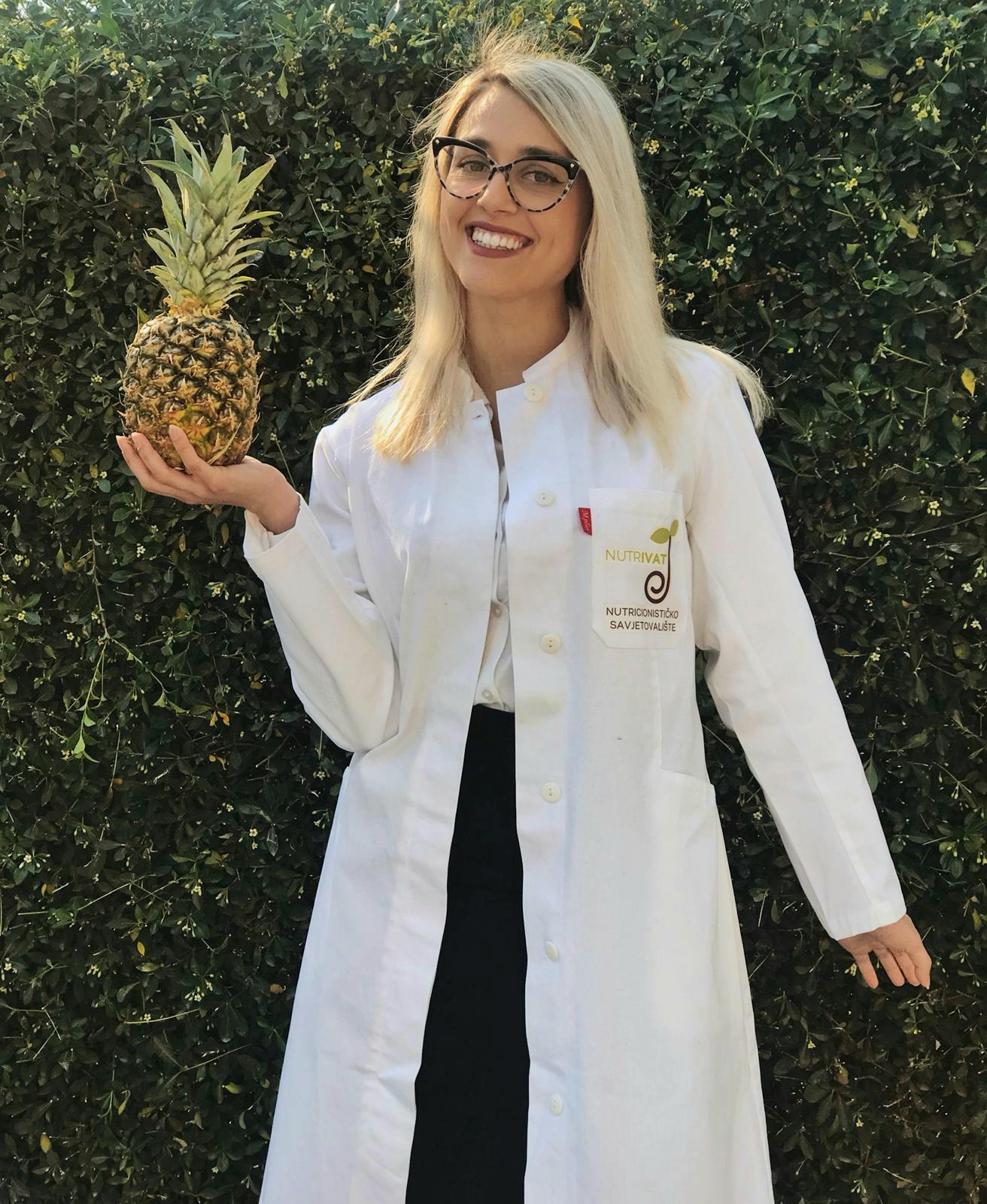 Iva Tokić, who has her own independent practice as a nutritionist and works as a nutritional educator and consultant for other polyclinics and sports professionals back in her hometown of Split. She has a Master's degree in nutrition
Iva Tokić, who has her own independent practice as a nutritionist and works as a nutritional educator and consultant for other polyclinics and sports professionals back in her hometown of Split. She has a Master's degree in nutrition
Food shopping in the UK is a very different experience to that in Croatia. You would struggle to understand fully just how different it is unless you'd actually done both. There simply isn't enough farmland in the UK to feed all of its inhabitants. Most food is imported. Where in Croatia, you can still experience the authentic experience of eating a varied diet based on the seasons, in the UK that simply doesn't exist. Everything is in season somewhere in the world. And that's where they'll take it from. Everything is available. All of the time.
What the UK loses in this set-up - seasonal eating and the varied diet this creates – it makes up for with the offer available and price. Food and flavours from all over the world can be bought in any of the competing supermarkets. International cuisine is incredibly popular. And, just as the supermarkets compete to lower prices, so do producers – it isn't only salmon and avocado that is cheaper in the UK.
The lamb produced in the lush, green hills of Wales or on the moors of northern England and southern Scotland is comparable in extremely high quality to the very best you could buy from Pag or anywhere else in Croatia. Except in the UK, the animals' diets are unrestricted – the lambs grow much bigger. Though much of this premium product is exported (British lamb is a highly prized delicacy across much of western Europe, particularly France), a lot of it is still sold in the UK. Its price is kept down by huge amounts of imported New Zealand lamb which competes against the domestic lamb in price. In Croatia, lamb is an expensive treat – in the UK, it's an everyday meat. And it is much cheaper than it is in Croatia. Although the lamb meat produced in the UK is of comparable quality to that produced in Croatia, the meats form a very different part of the diet in the two countries. In Croatia, lamb is an expensive treat. In the UK, lamb is much cheaper and viewed as an everyday meal
Although the lamb meat produced in the UK is of comparable quality to that produced in Croatia, the meats form a very different part of the diet in the two countries. In Croatia, lamb is an expensive treat. In the UK, lamb is much cheaper and viewed as an everyday meal
Within this one example we can sharply see the disparity between the premium food produced in Croatia and the general diet of the everyday citizen. Croatia is now known well for its cuisine and produce. TCN was pleased to report over recent weeks the success of food and agricultural exports from Croatia. However, the finest prsut, olive oil, seabass (brancin), bream (orada) and red wine for which Croatia is famous do not make up standard everyday Croatian meal. These luxuries are often exported. Pasteta (meat paste) on bread and cheap wine made palatable with cola are more likely to be the elements of Croatia's food found in any student kitchen in the country.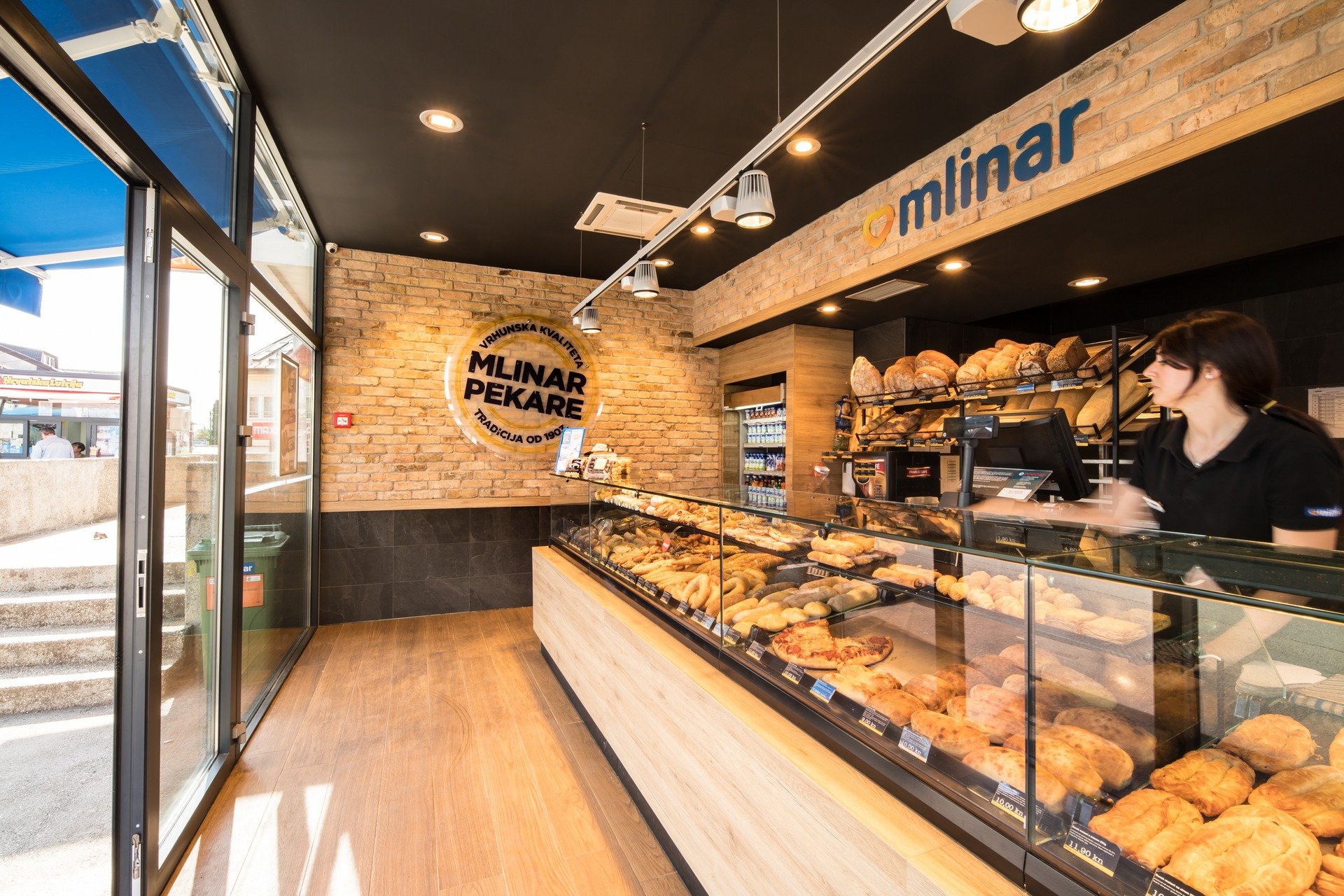 The pekara (bakery) is a fast, inexpensive and very popular choice for both breakfast and lunch in Croatia, but is it the healthiest thing to eat every day? © Mlinar
The pekara (bakery) is a fast, inexpensive and very popular choice for both breakfast and lunch in Croatia, but is it the healthiest thing to eat every day? © Mlinar
“We really don't eat enough fish. It's so disappointing because we live right next to the sea!” says Iva, who now works in her own independent practice, and as a nutritional educator and consultant back in her hometown of Split. “But, we don't eat enough of it because it's way too expensive for a lot of us to eat regularly. We also don't eat enough vegetables and fruit. We eat meat. We eat a lot of meat. We eat a lot of pekara (bakery) too. It's often the cheapest and the most convenient. If you want to save money and grab something fast, get breakfast in pekara. Students and older people in particular, they all eat in pekara. That's not good because that food is high in trans fatty acids and saturated fats. Saturated fats are a problem because it's a big cause of cardiovascular disease. Too much meat and pekara, not enough fish, fruit and vegetables – those are definitely the biggest problems with the Croatian diet.”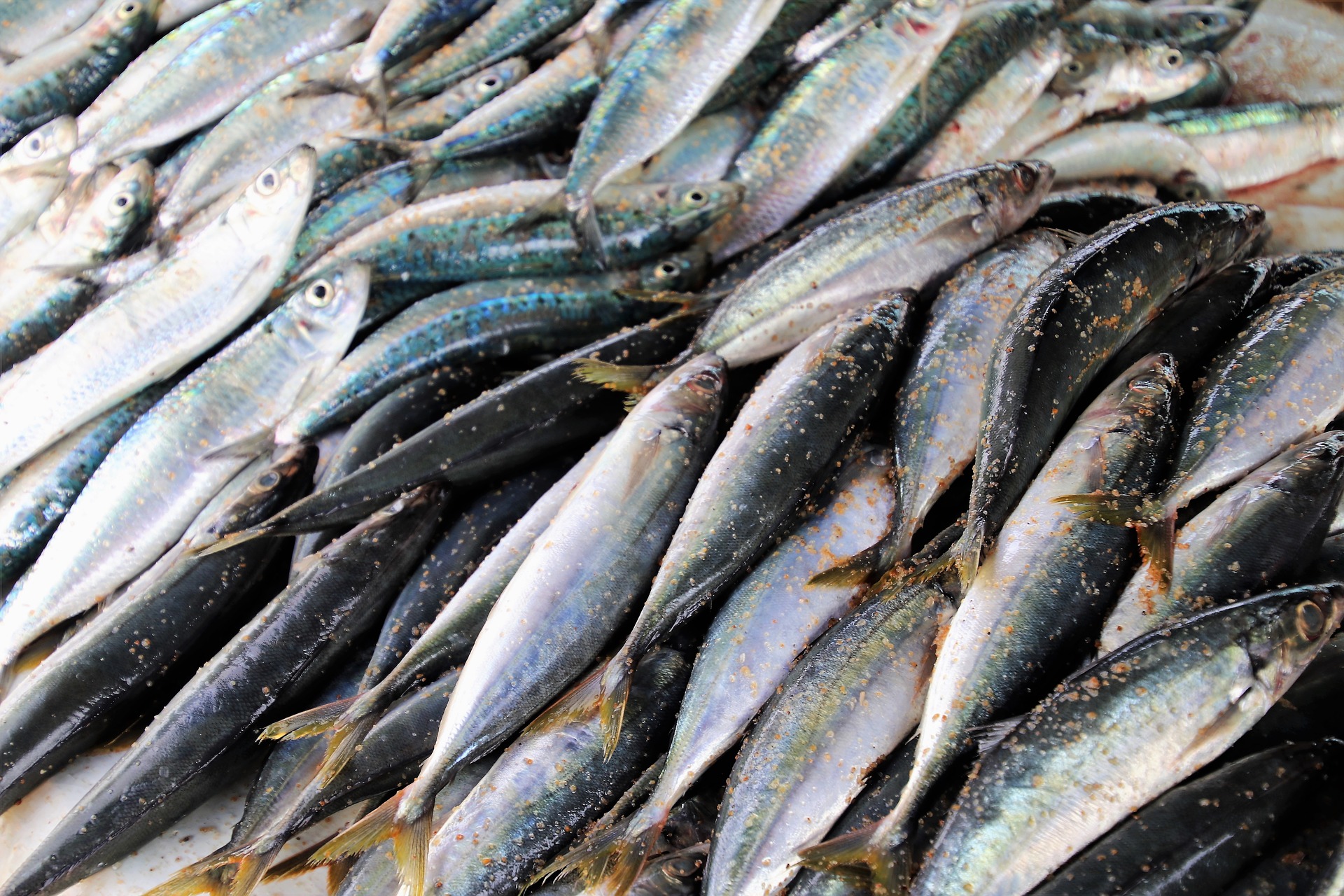 "Per capita consumption of fish and seafood in Croatia is estimated at 8 kg. Total consumption of fish and fish products per capita is significantly lower than in other Mediterranean countries. Fish is consumed mostly at home, traditionally once a week (on Friday) and during some holidays. The consumption of fish is higher in coastal areas than inland. Most fish is sold at traditional fish markets where the availability and freshness of fish products is considered very good. Only 3% of Croatia’s population eat fish every day, with the average person spending just 840 kuna (110 euros) a year on fish. In Croatia the most popular fish eaten are the cheaper varieties such as sardines and anchovies, followed by hake, mackerel and bonito. Croatia exports a big part of its quality fresh fish from the Adriatic, such as scampi and red mullet, whilst restaurants along the coast will often serve farmed fish or cheaper imported varieties." December 2016 Flanders investment and trade market survey of the Croatian Fishing sector, undertaken by the Trade Office of the Embassy of Belgium
"Per capita consumption of fish and seafood in Croatia is estimated at 8 kg. Total consumption of fish and fish products per capita is significantly lower than in other Mediterranean countries. Fish is consumed mostly at home, traditionally once a week (on Friday) and during some holidays. The consumption of fish is higher in coastal areas than inland. Most fish is sold at traditional fish markets where the availability and freshness of fish products is considered very good. Only 3% of Croatia’s population eat fish every day, with the average person spending just 840 kuna (110 euros) a year on fish. In Croatia the most popular fish eaten are the cheaper varieties such as sardines and anchovies, followed by hake, mackerel and bonito. Croatia exports a big part of its quality fresh fish from the Adriatic, such as scampi and red mullet, whilst restaurants along the coast will often serve farmed fish or cheaper imported varieties." December 2016 Flanders investment and trade market survey of the Croatian Fishing sector, undertaken by the Trade Office of the Embassy of Belgium
The problems of the diet created by Croatia's food habits have been observed for quite some time. And, according to the 2020 Global Nutrition Report, they are not getting better. Another report, one on childhood obesity published in just 2018 by the Croatian Institute of Public Health, stated that “every third child, i.e. 34.9% is overweight or obese. There are more overweight (21.5%) than obese (17.2%) boys. 67.3% of girls have a normal body mass index, 20.3% are overweight and 10.7% obese.” These figures are not improving, despite physical education being mandatory in Croatian schools.
“Everyone that comes to see me, everyone that seeks the help of a nutritionist, they all have high cholesterol levels, history of heart disease or they are obese,” says Iva. “The last one is becoming more of a problem. One third of children in Croatia are now obese. It's really quite pronounced. If you look at the statistics, obesity has actually been decreasing over recent years in developed countries. But, in Croatia, it is increasing.”
“Here, you can see the difference clearly between the UK and Croatia. In the UK, obesity was recognised as an issue and you can see the response throughout society. In the UK, you have taxes on sugary drinks. We don't have that here. The price of fruit and vegetables in the UK has actually been decreasing in recent years compared to average income. Here, it has only increased. At the supermarket checkout in the UK, it is now forbidden to have those tempting large racks advertising chocolates. From this year, that marketing is banned there, in the same way that advertising tobacco products is banned. Everything from the politics and the law to the school system is engaged in addressing the issue. We are not so much a developed country like the UK, so there is little promotion of physical activity here and no wider engagement of the issue. In the UK you even see signs suggesting “Why not takes the stairs instead of the elevator?” There's an effort to make everyone in society conscious of the issue.”
For a country famous for its international sports stars and the beach bodies that visitors see on the coast every summer, who would have thought that beneath the surface, Croatia's food and exercise habits were creating such a problem for the population? However, while a lack of exercise can be attributed to poor education and motivation, it is clear that economics has a significant impact on Croatia's food intake. In many cases, the poorer you are, the poorer you eat.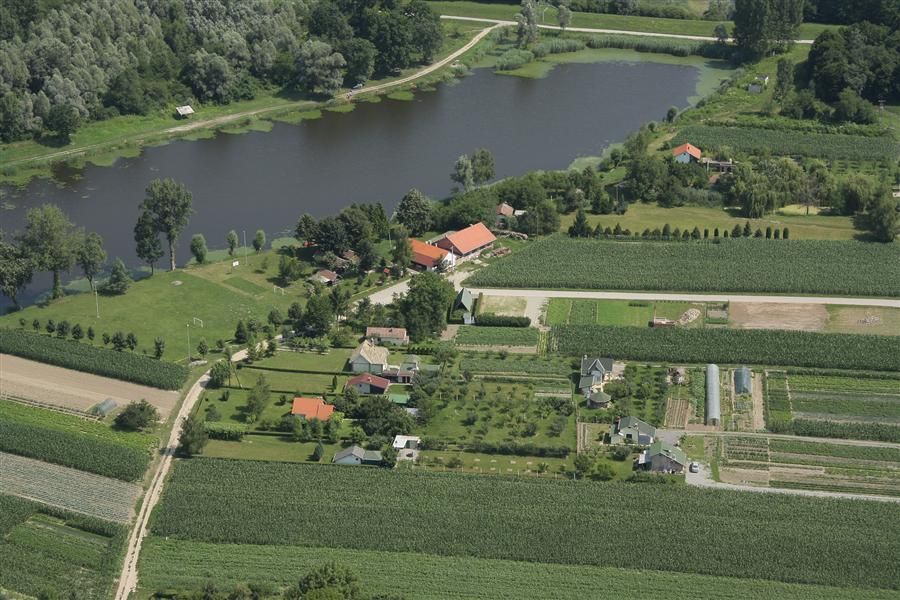 While eastern Croatia contains some of the country's economically weakest areas, many residents of Slavonia have land beside their houses where they grow vegetables, fruits and nuts. Despite this, they are still over-reliant on pork meat © Croatian National Tourist Board
While eastern Croatia contains some of the country's economically weakest areas, many residents of Slavonia have land beside their houses where they grow vegetables, fruits and nuts. Despite this, they are still over-reliant on pork meat © Croatian National Tourist Board
“In the more rural parts of our country, they eat much more seasonal fruits and vegetables,” says Iva. “They eat more vegetables in general – they grow it themselves and eat what they grow. Although, in many rural areas, there is still an over-reliance on meat. Especially the cheapest meat – pork.”
A 2008 study called Regional Differences in Dietary Habits of Adult Croatian Population conducted by researchers at the Andrija Stampar School of Public Health, School of Medicine, University of Zagreb concluded that the people in the poorest areas of Croatia had the poorest diets. Those regions were central Croatia and eastern Croatia (Slavonia).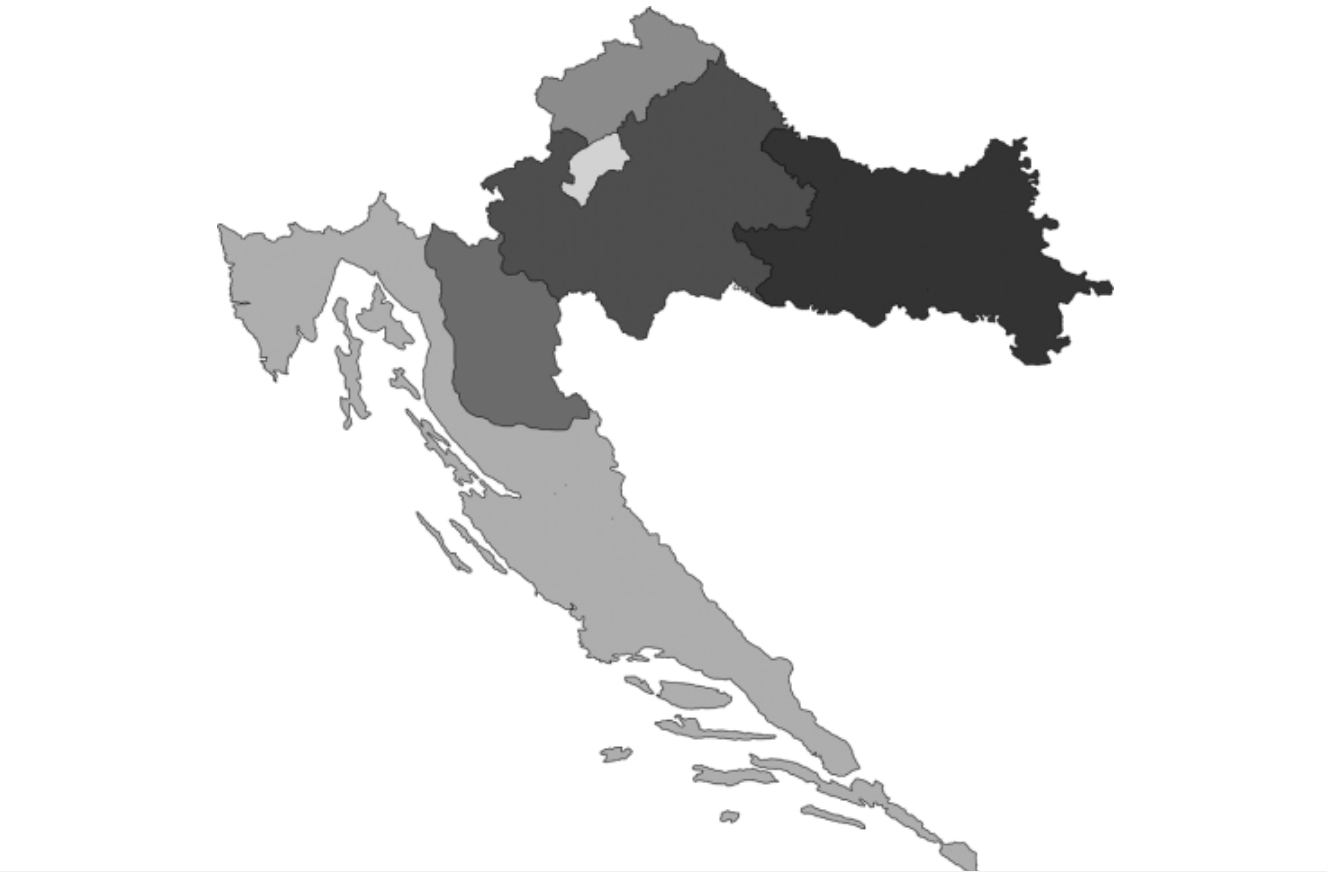 Croatia's food. A map showing the unhealthiest Croatian diets by region, produced for a study undertaken by researchers from the Andrija Stampar School of Public Health, School of Medicine, University of Zagreb. People who live in the poorest regions - central and eastern Croatia - have the least healthy diets. The diet of those who live in Zagreb, which has the country's highest wages, is very good
Croatia's food. A map showing the unhealthiest Croatian diets by region, produced for a study undertaken by researchers from the Andrija Stampar School of Public Health, School of Medicine, University of Zagreb. People who live in the poorest regions - central and eastern Croatia - have the least healthy diets. The diet of those who live in Zagreb, which has the country's highest wages, is very good
In these regions of higher unemployment and lower opportunities, people relied more heavily on a diet of red meat, preserved meats and smoked meats than anywhere else in the country. They also used more butter, pork lard and other kinds of animal fat in food preparation and more salt. While tradition and geographical location do play a part in forming these menus, it is incredibly naive to think that economics is not the key factor – there are river fish available all over Slavonia. This is not simply a question of a healthy Mediterranean diet in comparison to an unhealthy continental one – the City of Zagreb was shown in the study to consume an incredibly healthy diet of Croatia's food. The reason? It may be continental, but it has the highest wages in the country.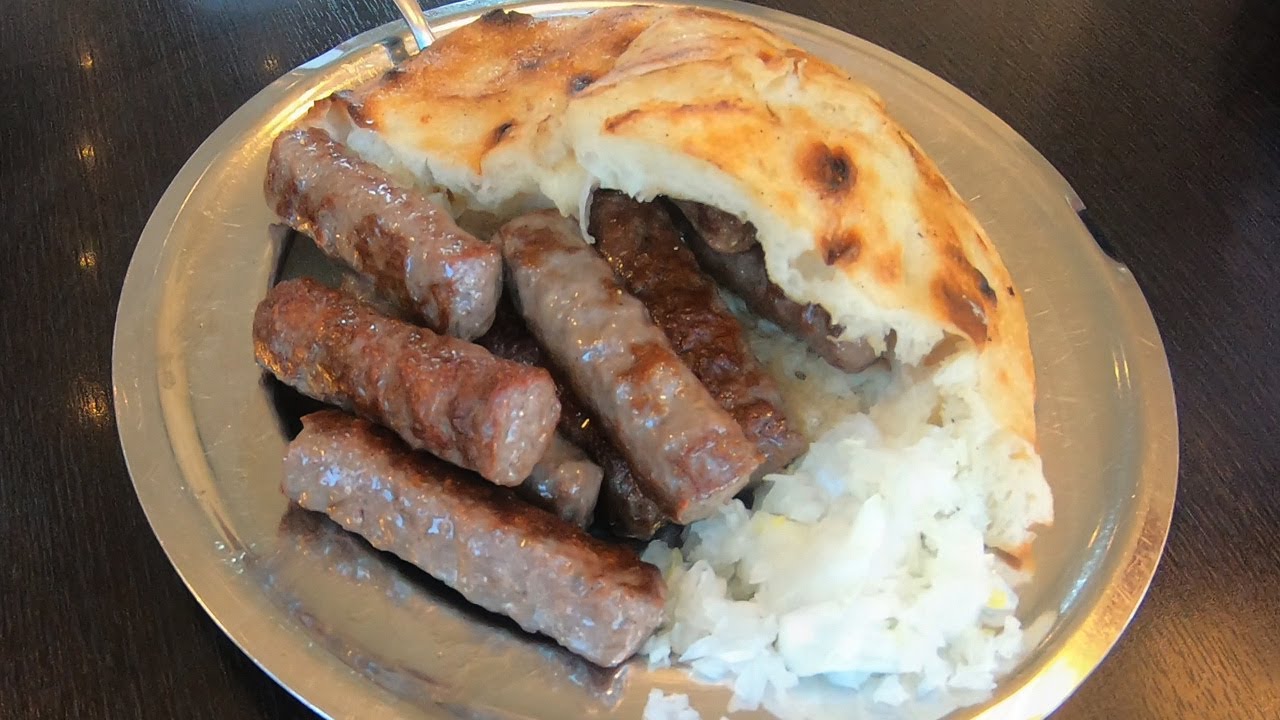 The Croatian diet is heavily reliant on unhealthy pork meat. Unless you go to a specialist or high-quality outlet, you will find cheap pork meat in almost every mixed/minced meat dish - in cevapi, in lasagne, in bakery snacks, in beefburgers and cheeseburgers (yes, really, they put pork their burgers - sometimes you can even find cheap chicken meat mixed into Croatian burgers. True story) and even in the mixed kebab meat. They preserve pork as the highly prized prsut/prosciutto, in sausages like kobasica and kulen, eat the pig's blood in a sausage called krvavica and fry the pig rind to make a crunchy but hardly healthy snack called cvarci. Croatia also has the best bacon in the world.
The Croatian diet is heavily reliant on unhealthy pork meat. Unless you go to a specialist or high-quality outlet, you will find cheap pork meat in almost every mixed/minced meat dish - in cevapi, in lasagne, in bakery snacks, in beefburgers and cheeseburgers (yes, really, they put pork their burgers - sometimes you can even find cheap chicken meat mixed into Croatian burgers. True story) and even in the mixed kebab meat. They preserve pork as the highly prized prsut/prosciutto, in sausages like kobasica and kulen, eat the pig's blood in a sausage called krvavica and fry the pig rind to make a crunchy but hardly healthy snack called cvarci. Croatia also has the best bacon in the world.
“Sometimes the most difficult obstacle to good health facing those here who really need to change their diet is the cost of Croatia's food,” agrees Iva. “It's easy to say “you must eat more fish, fruit and vegetables”, but it's not always easy to do. Many people simply can't afford it. So, what I try to do in those cases is to look for the cheapest foods available which are still the right options. For example, sardines here are really not so expensive. They are high in Vitamin D and Omega 3, which is very important for cardiovascular health. I also recommend eggs, which are high in Omega 3 fatty acids and Vitamin D. I recommend changing to milk and cheese which have a lower fat content. You can find good food which is not that expensive. You might have to search, but you can find it. I recommend people to go and see what is in the discount section. There are lots of us looking to address these problems. On the Instagram page of different.hr each week they advertise what foods are on discount in every Croatian supermarket. That's a really useful resource. It's also great to grow something of your own. You don't need a huge Slavonian back garden to do it – you can even grow some things just on your balcony.”
HPK and MHP Launch Project for Croatian Producers from Quake-Hit Areas
January the 13th, 2021 - Central Croatia was hit by a devastating earthquake at the end of what was a truly horrendous 2020, but several groups, including HPK (Croatian Chamber of Agriculture) and MHP (Cluster of Small Croatian Producers) are launching a joint initiative to help market what is made by Croatian producers from Sisak-Moslavina County.
As Poslovni Dnevnik writes, the two groups are jointly launching a project to market the products made by Croatian producers from the areas most deeply affected by the recent earthquake and are as such inviting Croatian producers to contact HPK in order to find their way to their customers and consumers.
As they point out, they expect that this initiative will help Croatian farmers who are currently facing huge problems, both in production and in product placement. It's worth mentioning that MHP has been recording constant growth for many years and can boast of good results in business related to the development and distribution of products of small Croatian producers.
"In most cases, these are Croatian producers who sold their produce to the local population through markets, and when it comes to that, it's still questionable when they'll be able to start working again, our role will be in the regular purchase and preparation of products for the consumer market. In particular, the idea is to organise a packaging centre in which to pack and prepare goods for further distribution,'' they emphasised.
MHP will place goods made by Croatian producers from the earthquake-afflicted areas of the country on the market under its own name, and the final placement to the end consumer will be in the process of preparation with key partners who are leaders in retail.
"Given that it is estimated that this is not a large volume of products, we believe that with a maximum of 200 square metres, we'll have enough space to meet the placement target for about 50 Croatian manufacturers. We will provide the space under our direction, and we asked HPK to get involved in the segment of furnishing the space and speeding up the registration procedures. We're going to deal with the whole procedure without compensation for those Croatian producers, which is another reason why we're asking for the support of HPK, the umbrella organizstion of all Croatian farmers,'' concluded Marko Spiljar, director of MHP Alimentum trade.
For the latest travel info, bookmark our main travel info article, which is updated daily.
Read the Croatian Travel Update in your language - now available in 24 languages.
Minister Vili Beros: One Million Croats Vaccinated Before End of March?
January the 13th, 2021 - Could Croatia manage to vaccinate one million Croatian residents before the end of March? According to Health Minister Vili Beros, it's not only possible but deeply desired.
As Poslovni Dnevnik writes, Health Minister Vili Beros said there was going to be no easing of any anti-epidemic measures as yet, adding that the epidemiological situation across Croatia was now better and that the pressure on the healthcare system, which has been terrible of late, was finally diminishing.
"I want to believe that this is the result of the responsibility of people, but it also showcases the full meaning of what our measures are. We must not do anything that would jeopardise these positive trends, especially if we look at the events going on in Croatia's surrounding countries, the so-called the third wave. This is the possible consequence of socialising more indoors during the festive period, and also with regard to the specific situation in Croatia, which are the tragic events in Sisak-Moslavina County. Circumstances there can contribute to the spread of the epidemic, so we must be careful,'' Minister Vili Beros warned to Dnevnik HTV.
Interest in the vaccine
When asked how satisfied he was with how vaccination is going in Croatia, he said that the government had done everything possible to provide the vaccine.
"There's a lot of interest in it, and more vaccines are needed. People have put their faith in science, in the profession, in medicine. We need to reach a vaccination rate of more than 70 percent, and I believe we'll achieve that. There are 17,550 doses of the Pfizer vaccine arriving per week, there'll be 264,000 doses by the end of March. Moderna's vaccine is coming today, and there'll be a total of 52,000 doses of that by the end of February, the good news is that AstraZeneca has made progress too and the EMA will approve the vaccine on January the 29th. It's realistically possible that we'll be able to vaccinate a million people in Croatia by the end of March,'' said Minister Vili Beros.
Minister Vili Beros said private healthcare workers will be vaccinated in late January and in early February. The priority in vaccination, he reiterated, are those most vulnerable people living in homes for the elderly, employees of the social welfare system and healthcare workers. In the second phase, those over 65 with chronic illness or underlying diseases will be vaccinated, and those younger than 65 will be vaccinated at the end of February and at the beginning of March, depending on the dynamics of vaccine delivery.
The conditions in the earthquake-stricken Sisak hospital...
He commented on the situation in the Sisak hospital, saying that when it comes to statics, technical elements, the profession must have its say first.
"Engineers are evaluating the situation in the Sisak hospital. The surgical building is safe, according to the profession, unlike other buildings,'' he said.
The coronavirus crisis has cost a lot, he pointed out and stated that more than 1.132 billion kuna was spent on testing, treatment and sick leave, 82 million kuna on special drugs, 420 million kuna on vaccines, equaling a total of 1.634 billion kuna.
For the latest travel info, bookmark our main travel info article, which is updated daily.
Read the Croatian Travel Update in your language - now available in 24 languages.
Croatian Company Microblink Boasts World Class Platform, Attracts Investors
January the 13th, 2021 - Croatian companies are becoming more and more recognised and respected across the world, and the Croatian company Microblink, headquartered in Zagreb, is just one of them.
As Poslovni Dnevnik/Lucija Spiljak writes, the end of a series of successes of Croatian technology companies in 2020 was made by the roatian company Microblink with the investment of the Boston investment company Silversmith Capital Partners, which invested 60 million US dollars in Microblink for a minority stake, making the domestic company's market valuation exceed one billion kuna.
Microblink is a world leader in the field of computer vision based on artificial intelligence (AI), and many applications use its technology to use a mobile phone camera to replace manual data entry.
Their software products are used by several hundred million users in about 70 countries. In 2020, despite the coronavirus crisis, the Croatian company Microblink ended with a 36% increase in sales revenue with an increase in the number of employees, which now numbers more than 100, and with a new investment board with Sri Rao, a Silversmith partner, and Darren Bassman, co-founder of BlinkReceipt, who became the CEO of Microblink.
''The Microblink technology platform enables intelligent use of computer vision such as account scanning (BlinkReceipt), personal documents (BlinkID) and payment data (BlinkCard). BlinkReceipt extracts and identifies data at the level of the SKU (Central Control Unit) from the real-time accounts of hundreds of traders and millions of SKUs. There's a huge opportunity in this category and we're going to continue to invest in it,'' said Darren Bassman.
As this is the first time that external capital has entered Microblink, and for Silversmith it was the first time they invested in a Croatian company, the general partner in Silversmith, now a member of the Board of Microblink, Sri Rao, revealed to what the plans going forward are.
Why Microblink?
Microblink has brought together one of the world’s leading technology teams focused on data science and computer vision. This talented group has developed a platform that unlocks real-world AI and machine learning applications that are now used by hundreds of millions of end users, who collectively scan billions of documents each year to save time and money. The company is addressing a large, growing market and we look forward to working with a team that continues to develop customer-focused products that solve problems for companies in a variety of industries.
What benefits does partnering with Silversmith Capital Partners bring to Microblink?
Silversmith is focused on partnering with profitable companies like Microblink with high growth, run by their founders. Focusing on products focused on product growth as a market entry strategy allows us to leverage our experience and our networks as a complement to the management teams we support. Microblink has built a world-class engineering organisation and technology platform, and the partnership with Silversmith will help the company accelerate growth in key business areas, including product development, market entry and team expansion. We're long-term oriented investors and will work with the company to invest in a team, product and market-going organisation to enable sustainable growth in the future.
After the partnership with the Croatian company Microblink, will you start a deeper study of the Croatian IT scene, considering that Microblink is the first Croatian IT company in which you have invested?
We're always looking for exciting growing companies with market leading products in our key areas of focus. We're also discovering that there are more and more of them outside of the Silicon Valley, and this is a trend we have long believed in. We enjoy discovering great talents on the Croatian technology scene.
You state that Silversmith’s mission is to partner and support the best entrepreneurs in growing, profitable technology and healthcare companies. We've seen that technology, ie digitalisation and digital transformation, and healthcare are the most important industries, which in 2020 experienced additional growth due to the global crisis. How has this crisis affected Silversmith, this investment and results?
2020 was certainly a unique and challenging year on so many levels. In response to the crisis, there has been an acceleration of digital transformation around the world. What would take years to move, happened in a mere few months. We've seen this through the prism of our portfolio companies. Some of them were already remote organisations, and others had to move out of the office, while taking care of the health and safety of their teams. The profitable nature of these companies has allowed them to weather the storm, and the need for digital solutions due to the pandemic has allowed some companies to accelerate their growth.
Technology and health will continue to serve as key components of economic recovery even after the end of the pandemic. Our focus on growing, profitable companies means that every business is well positioned to address new opportunities. Across the portfolio in 2020, we saw 43 completed acquisitions, a 20 percent increase in employees, a 30 percent increase in average income, and four investment exits (full and partial).
How many professional investors do you gather together? How much has Silversmith collected since its founding back in 2015?
We have 22 professional investors. Since its inception, we have raised 460 million US dollars in the first fund in 2015, 670 million dollars in the second in 2018, and 880 million dollars in 2020. In the last five years, we've invested in 27 companies in the technology and health segment, with an emphasis primarily placed on supporting long-term growth.
What are the goals and plans for 2021?
Our goals for 2021 will be similar to those at the time the company was founded - finding and partnering with the best entrepreneurs in the technology and healthcare sector and working with them to expand and develop their business.
For the latest travel info, bookmark our main travel info article, which is updated daily.
Read the Croatian Travel Update in your language - now available in 24 languages.
When Will Croatian Tourism Return in 2021? Price Wars to Commence
January the 13th, 2021 - When will Croatian tourism return? As 2021 brings the vaccine to the world, what might be expect for this year following a dire 2020, and when might we expect to see tourists arriving like they did back during the ''old normal''?
As Novac/Barbara Ban writes, the German Government isn't counting on the normalisation of the tourism market whatsoever before the summer, according to the German Government's commissioner for tourism, Thomas Bareiss, in an interview with German media yesterday, adding that he believes that in the next two to three months, travel will continue to be difficult to imagine. Bareiss expects that the tourist market will begin to recover in the second quarter and fully revive by the summer, which means that Croatian tourism can't expect a recovery from the German market before Easter.
“If we really manage to vaccinate most citizens in the second quarter, then we'll have a relatively safe situation when it comes to travel,” Bareiss said.
The Croatian tourism sector assessed the assessments of the German Commissioner for Tourism as positive. According to the people involved in the operation, they have already prepared for the fact that the start of the pre-season will be worse due to the epidemiological situation throughout Europe. This year, Easter also falls earlier.
Croatian Minister of Tourism Nikolina Brnjac said that Croatia had begun preparations for the season and that they were in contact with representatives of the tourism sector and economic entities in Germany.
"The basic message of all meetings is that the health and safety of all of us must come first. Although it's difficult to assess when the epidemiological situation will normalise, it's certain that with the arrival of the vaccine we're entering a new phase in the fight against the coronavirus pandemic. A sufficient level of vaccination will certainly affect the perception of all tourist destinations this year, including Croatia,'' said Brnjac, adding that vaccination is a message of responsibility.
"In addition to vaccination, there are health security protocols for all stakeholders in tourism, which the Ministry will soon present and market in emitting markets. Personally, I hope for a higher level of vaccination, both in Croatia and in our emitting markets, because it will bring us the normalisation of tourist traffic,'' the Minister noted when discussing when the Croatian tourism return.
"I think the statement that the tourism market will start recovering in the second quarter is good news for us. How long the preseason will be depends on a lot of factors. It should be better than it was last year when it didn't even exist. Objectively, Easter falls very early and every overnight stay is precious, especially in this situation, we should be realistic and expect good numbers from the second half of May onwards,'' said the president of the Croatian Tourism Association, Veljko Ostojic.
The head of the Uniline travel agency, Boris Zgomba, says the bigger challenge will be prices wars and competition when it comes to the general Croatian tourism return.
"Turkey, Greece, Spain, Italy are all returning and there will be a struggle for prices, services and promotion. There will be a lot of last minute deals, bookings and riots on the tourism market. Financially speaking, we can't expect a big recovery yet. According to my estimate, we'll be at 60 percent of the traffic we had back in 2019 this year," Ostojic concluded.
For the latest travel info, bookmark our main travel info article, which is updated daily.
Read the Croatian Travel Update in your language - now available in 24 languages.
Pupovac: Banija or Banovina Debate Shows Politicisation of Language
ZAGREB, 12 January, 2021 - Serb National Council president Milorad Pupovac said on Tuesday the discussion on whether Banija or Banovina was the correct name for the Croatian region showed a strong politicisation of language and that both were linguistically correct.
A professor at the Zagreb Faculty of Humanities and Social Sciences Department for Applied Linguistics, he told N1 television that "language here is a very politicised issue... with the intention to build the national Croatian identity" which, he said, often causes misunderstandings, lack of freedom in speakers and fears and uncertainty as to how to use one's own language.
Post-war reconstruction
Pupovac also commented on the post-war reconstruction of homes in Sisak-Moslavina County, some of which were razed by a 29 December earthquake, which raised the issue of quality and responsibility.
He said "indeed all sorts of things" happened in the reconstruction after the 1991-95 Homeland War, including different treatment on ethnic grounds.
There are many aspects that need to be established, including the extent of responsibility and who was responsible, he said, mentioning the problem of hiring subcontractors and insufficient awareness of the seismological situation.
Boris Milošević, the deputy prime minister for human rights and a member of the task force dealing with the aftermath of the 29 December tremor, said he used the name Banija for the region and that, given the job that needs to be done after the quake and to solve the problems of the locals who lost their homes, "I can't wait for the time when that will be the only concern, whether it's Banija or Banovina."
For the latest information on the earthquake emergency, follow the dedicated TCN section.
Earthquake Donations in Action: Croatian Entrepreneurs (UGP) Fund Report, January 12
January 12, 2021 - Transparent donations getting to the people who need them most are essential in emergency response. TCN follows the Voice of Entrepreneurs Glas Poduzetnika (UGP) fund to report on the realities on the ground.
The donations are pouring in from all over the world to help the victims of the earthquakes in Petrinja, Glina and Sisak, donations which have been gratefully received and which are making a difference.
As I wrote previously, many people have contacted us at TCN asking for advice on the best place to send money. We published a list a few days ago, but I was really happy to see one more fund set up 7 days ago, from Udruga Glas Poduzetnika, or Voice of Entrepreneurs, which is a growing force for reform and change in Croatia. Run by people who want to see an end to corruption and needless red tape, I was sure that their efforts to help their fellow citizens in crisis would be transparent, dynamic, focused and effective, with all money donated going to the people who needed it most. And so it proved, which is why I am now directing anyone looking for a place to donate to UGP, as I explained a few days ago.
UGP co-founder Drazen Orescanin was kind enough to give me an in-depth interview yesterday on the focus, plans and activities of the UGP fund, and it was great to hear that 100% of the money donated will go to help those who need it most.
In order to provide more transparent donation information, we agreed to publish a daily report of the fund's activities, finances and purchases. This was due to be published yesterday, but the crazy events of January 6, 2021 meant a slight delay. As resources and time allow, this will be a daily feature, and you can track progress here.
Daily activities
Today, we have managed to deliver 2 housing containers to families in Sisak. Cold weather and snow have caused delays in deliveries in all of Croatia. For us, it was very important to deliver these containers as soon as possible. There are still a lot of people who don’t have a roof over their heads and the weather is making the situation worse.
The difficult situation in which the families of Tajana Kondres and Slobodan Caljuga found themselves is now somewhat easier and thanks to donations of our members, these two families can safely wait for the renovation of their homes. Families are indescribably grateful to all of the people who made this possible.
What's next?
This week we will continue to work with our volunteers and we will try to deliver more housing containers. We are planning to deliver 2 containers on Thursday and 2 more containers on Saturday or Sunday. Moreover, we are now making plans to help people with building materials so that they can rebuild their homes as soon as possible.
Information in English for donations, both for donations from Croatia and abroad.
For the latest news on UGP, follow the dedicated TCN section.
For the latest information on the earthquake emergency, follow the dedicated TCN section.


